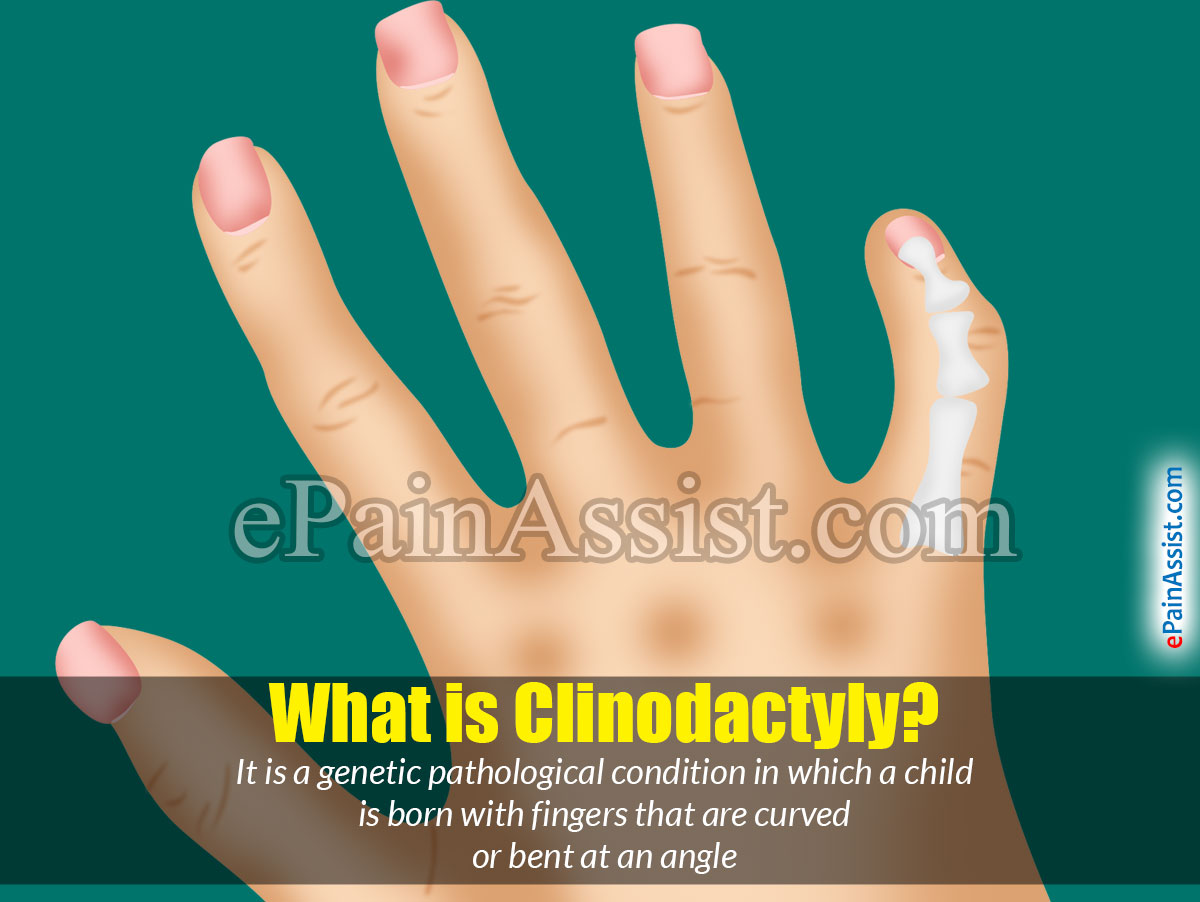What is Clinodactyly?
Clinodactyly[1] is a genetic pathological condition in which a child is born with fingers that are curved or bent at an angle. The main cause of Clinodactyly is the abnormal growth and alignment of the small bones of the finger. Clinodactyly is quite a rare condition and affects about 8-10% of the population. This condition may be mild to severe in nature. Surgery for Clinodactyly is needed in majority of the cases to correct the deformity and allow the child to use the hand as normally as possible in day to day activities.

What Causes Clinodactyly?
As stated, the main cause of Clinodactyly[2] is abnormal growth and malalignment of the small bones of the fingers. This may be caused due to an abnormal orientation of the growth plate of the hands of the child and instead of growing at a right angle to the finger axis it grows in a totally different direction which results in formation of bones which are abnormally shaped. This may also affect the alignment of the finger joints as well. This condition is seen more in boys than it is seen in girls. Very rarely is Clinodactyly seen bilaterally as it usually affects one hand. Individuals suffering from Down syndrome tend to have Clinodactyly more than the other population
What are the Symptoms of Clinodactyly?

Clinodactyly is a visible deformity which can be seen as soon as a child is born as a bent or a curved finger will be immediately seen. If the child has an inherited condition like a Down syndrome, then the symptoms associated with it will also be observed.
How is Clinodactyly Diagnosed?
Since Clinodactyly is a visible deformity it can be clearly visible at the time of birth of the child. Apart from this, the physician will do a careful inspection of the affected hand to look at the state of the hand and the fingers. To look at the internal structures of the fingers involved the physician may also order radiological studies in the form of an x-ray or a CT scan which virtually confirms the diagnosis of Clinodactyly.
What is the Treatment for Clinodactyly?[3]
If the bend or curve of the finger is relatively mild then it will not cause any dysfunction of the hand and the child will be able to use the hands normally for all needs and purposes and hence no treatment in such cases is required.
Careful and diligent follow ups are required so that close monitoring can be done to inspect any progression of Clinodactyly. These follow ups will be required throughout the growing age of the child till the growth plates close and the child is in the adolescent age. In cases where there is a rapid deterioration of the angle of the curve or bend in Clinodactyly then surgery is required to correct the deformity as the curve will then interfere with the ability of the child to function with the hand and interfere with activities like gripping, grasping or other functions of the hand. The surgical procedure involves making a small incision or a nick in the affected finger, cutting the bone, and then correcting the deformity. Immobilization of the finger is then done to allow the bone and the soft tissues to heal post surgery. In majority of cases of Clinodactyly, surgical procedure corrects the deformity but there is always a chance of recurrence thereby requiring future need for surgery to treat Clinodactyly.
